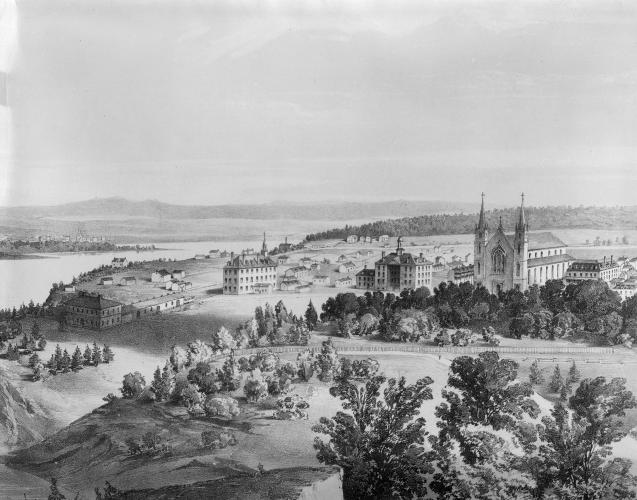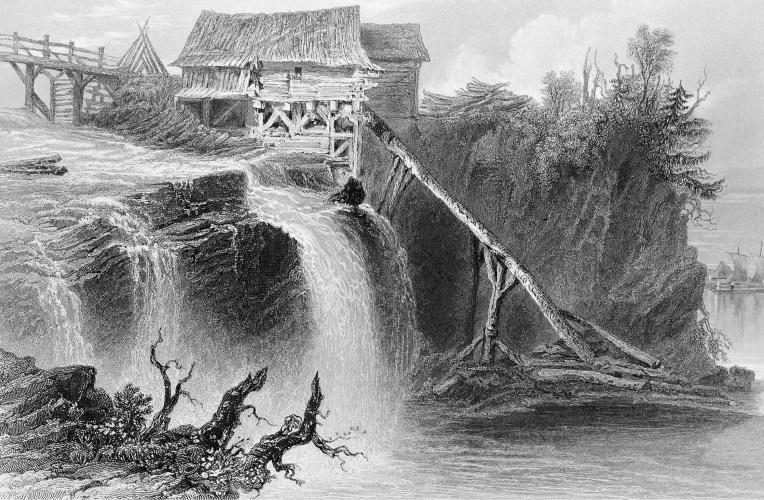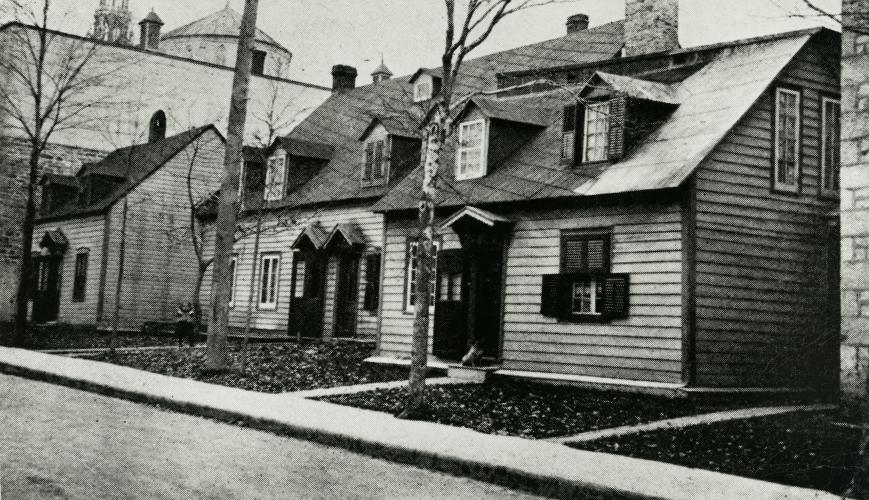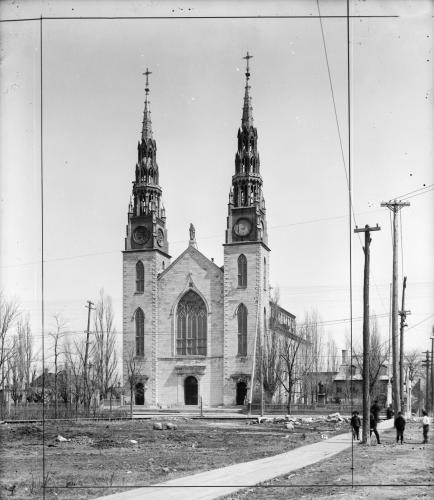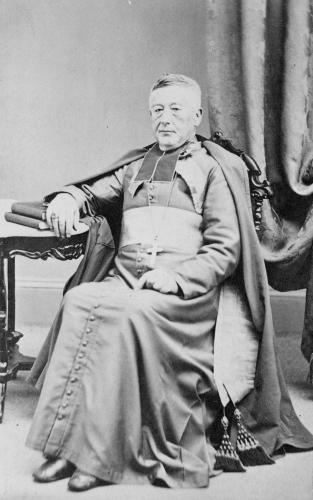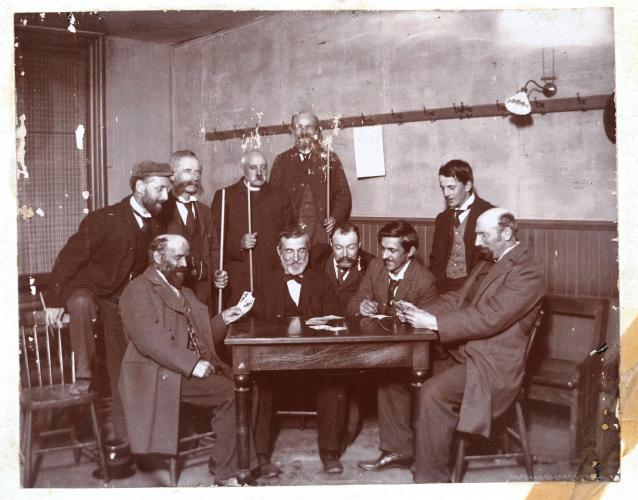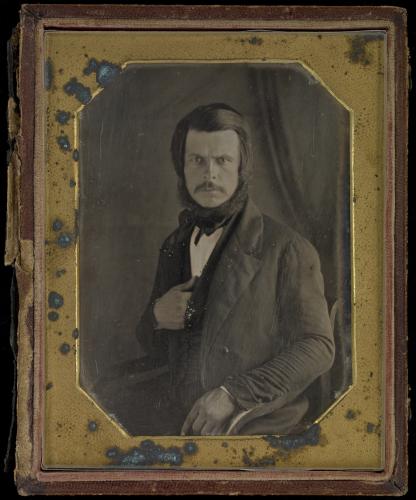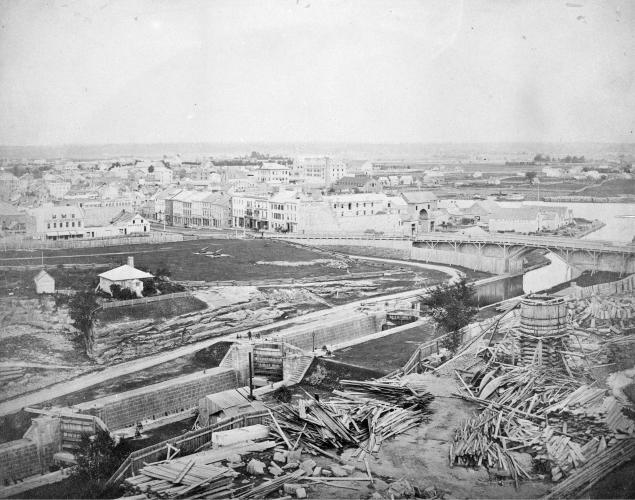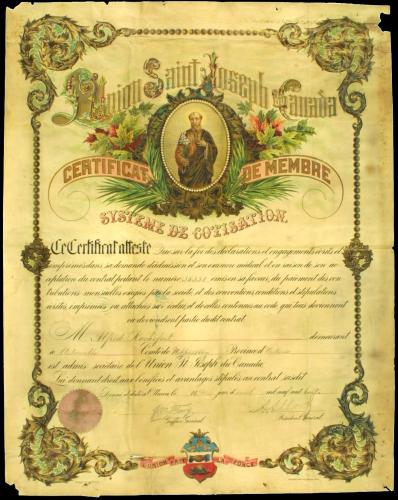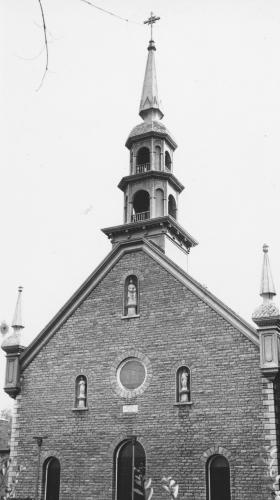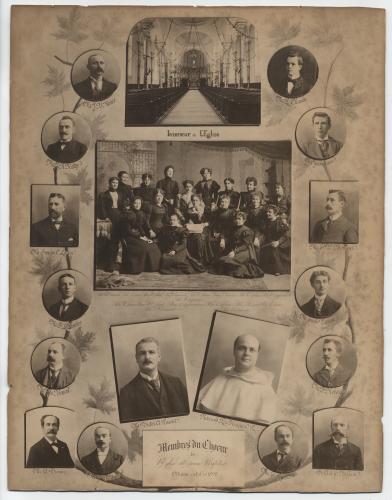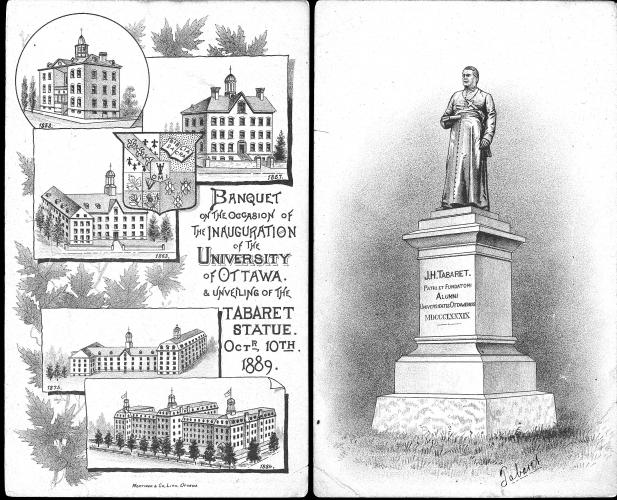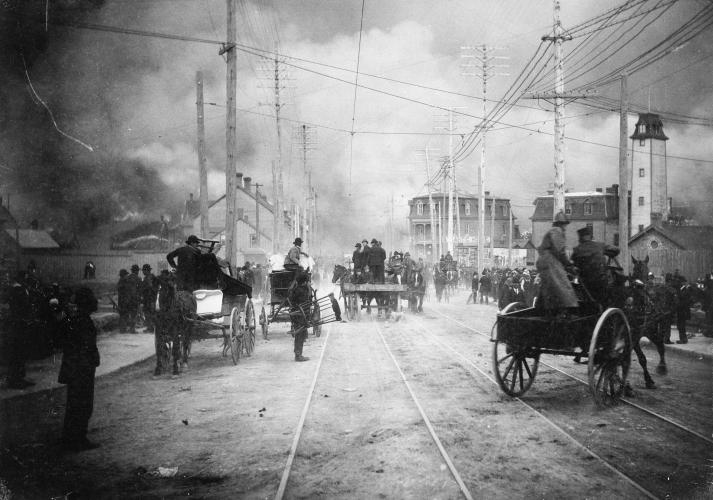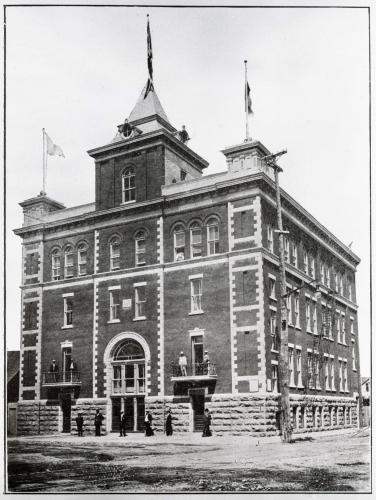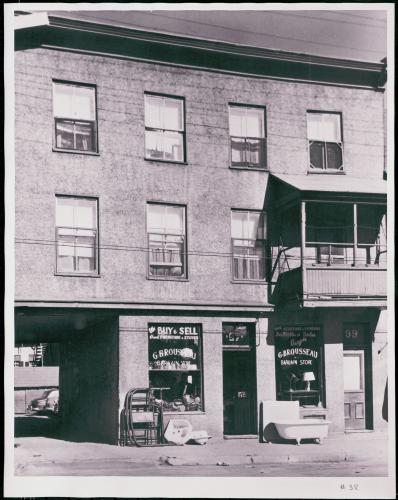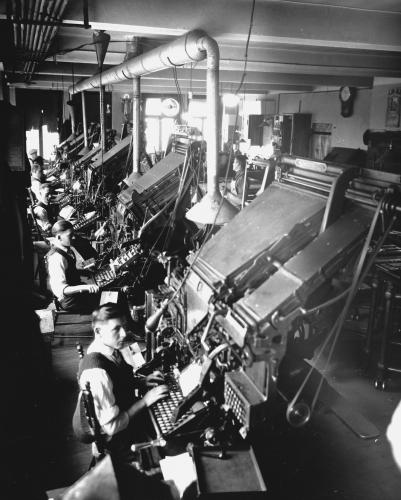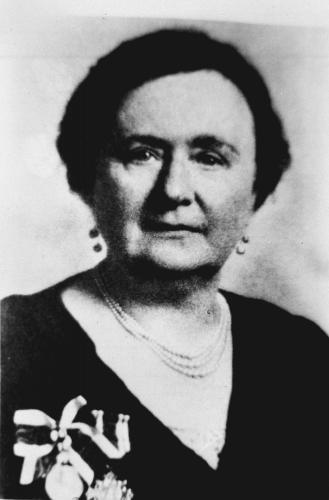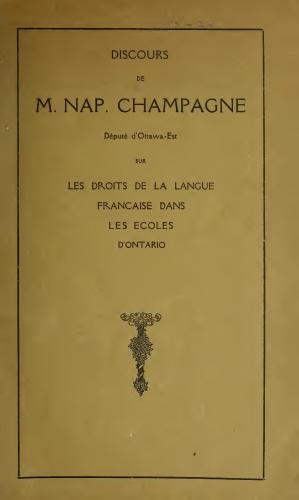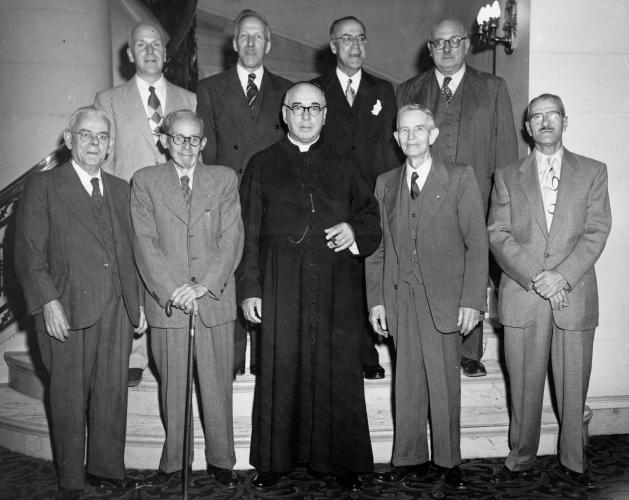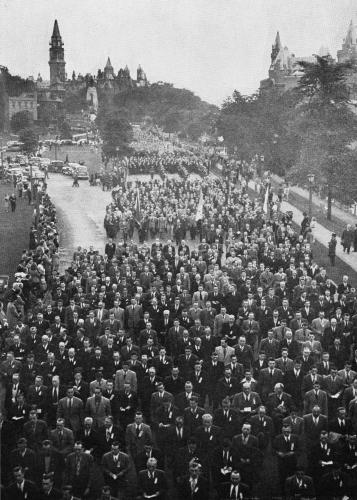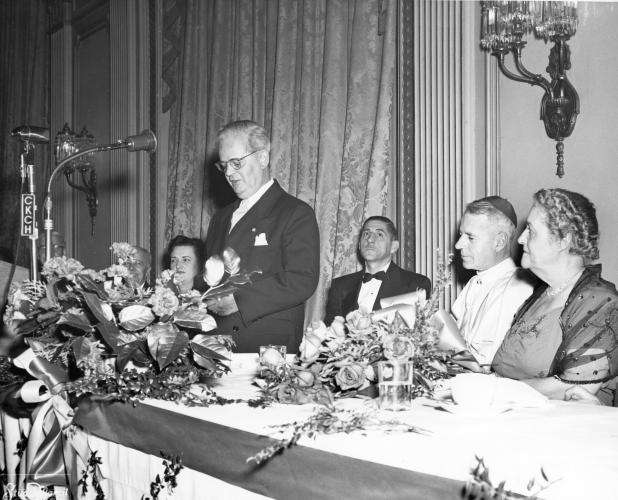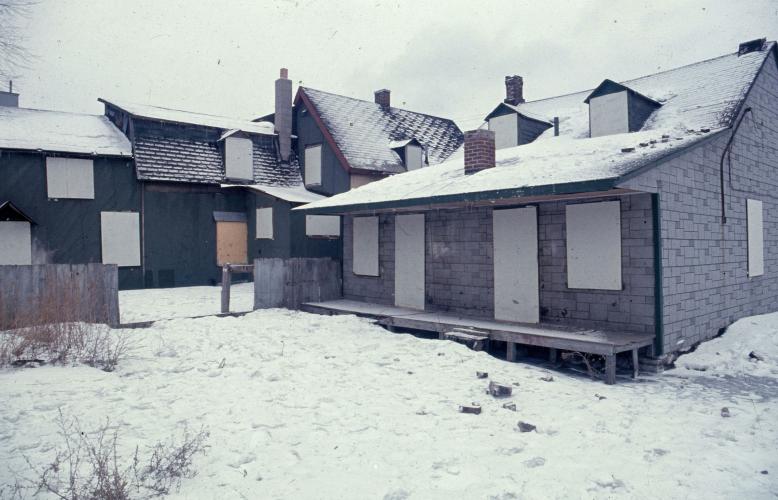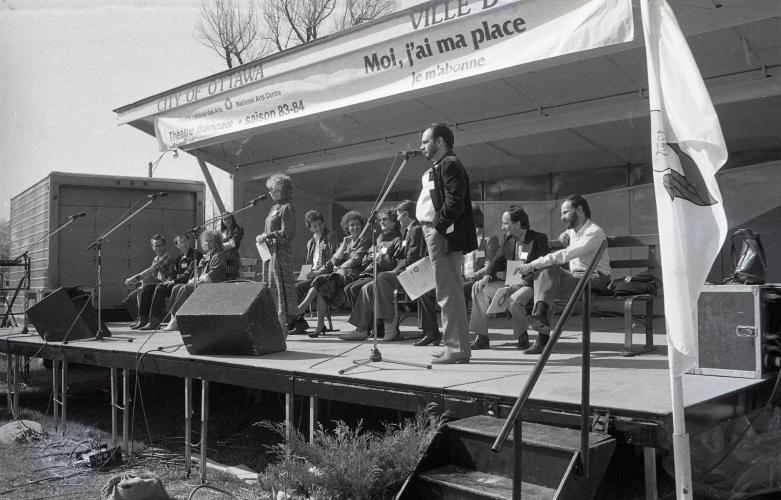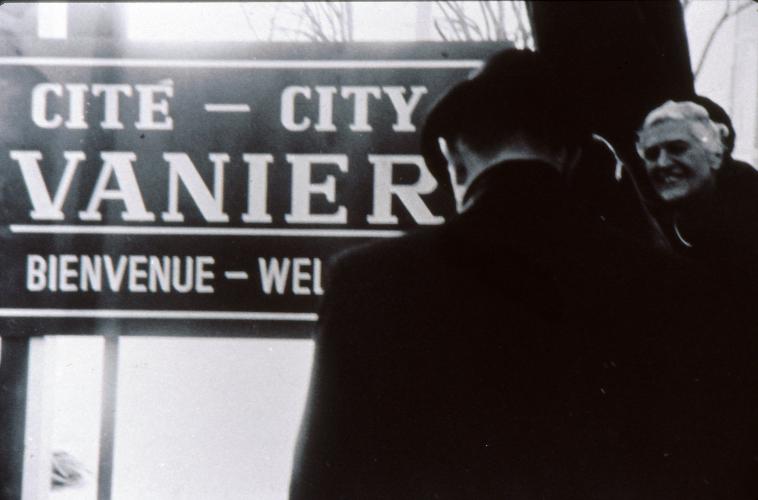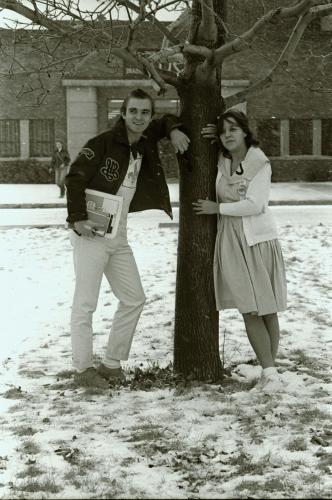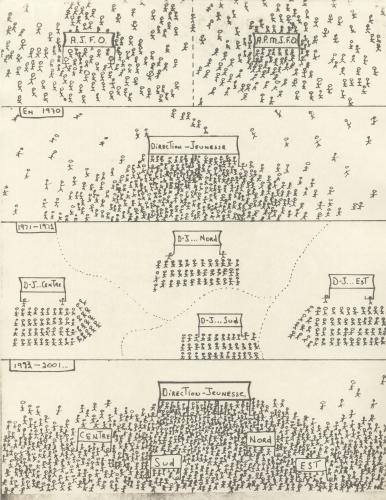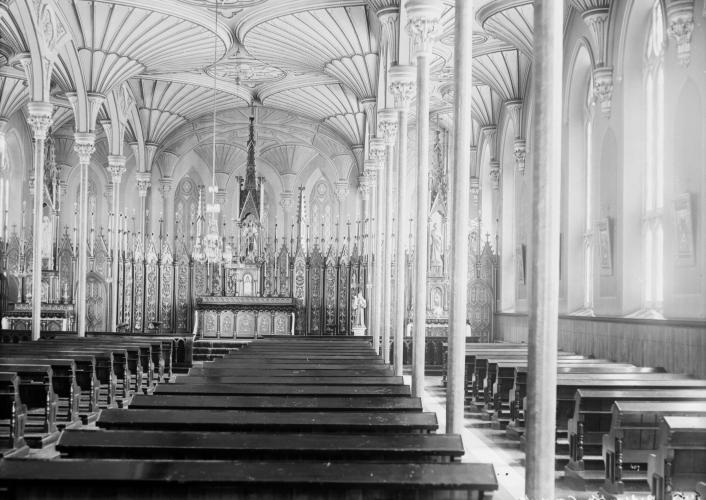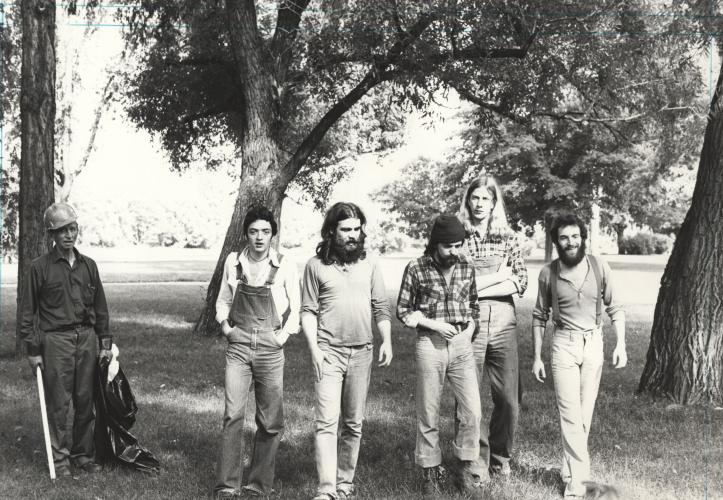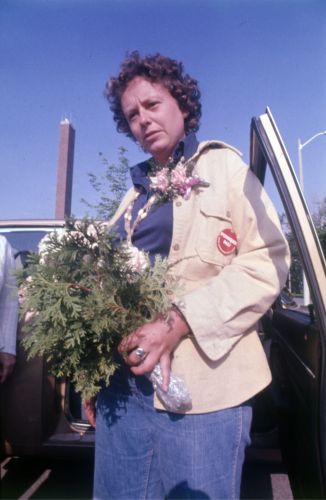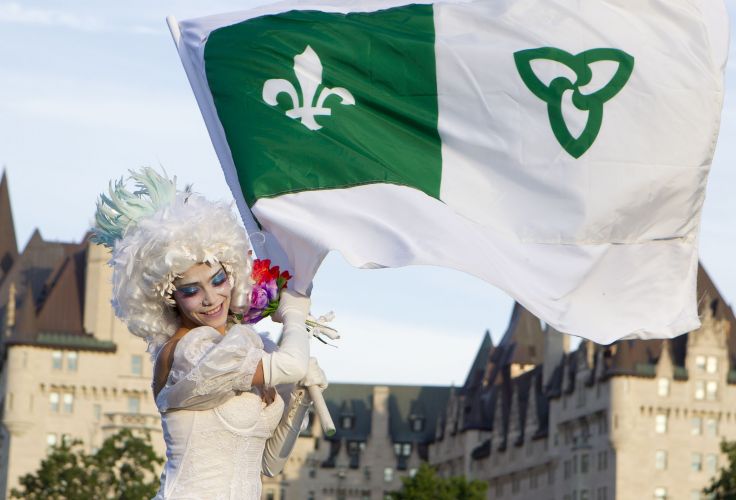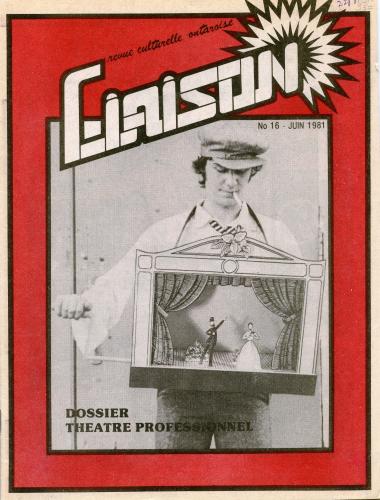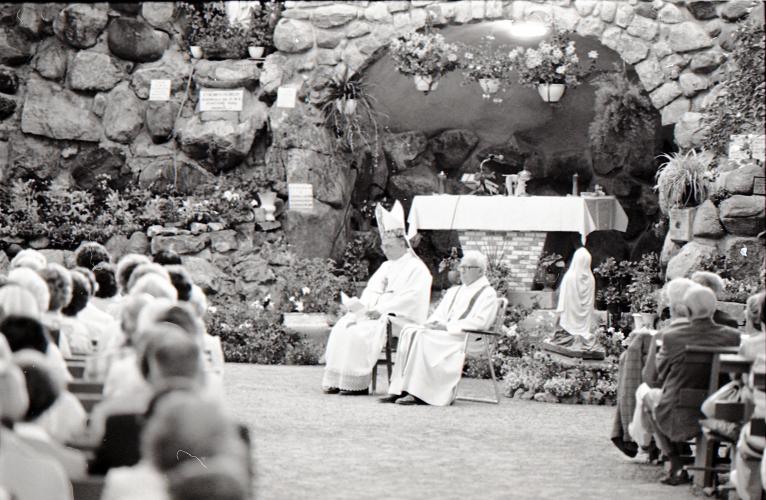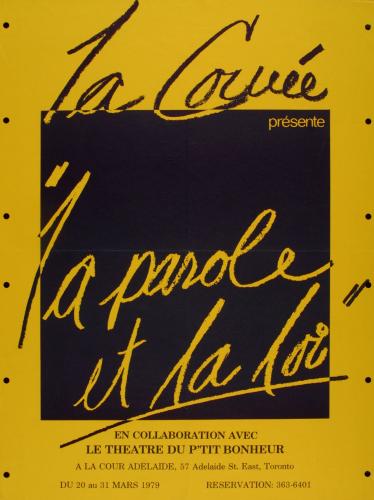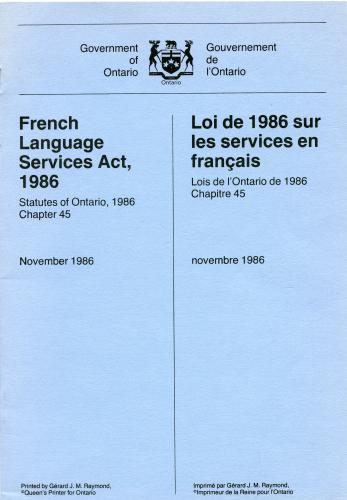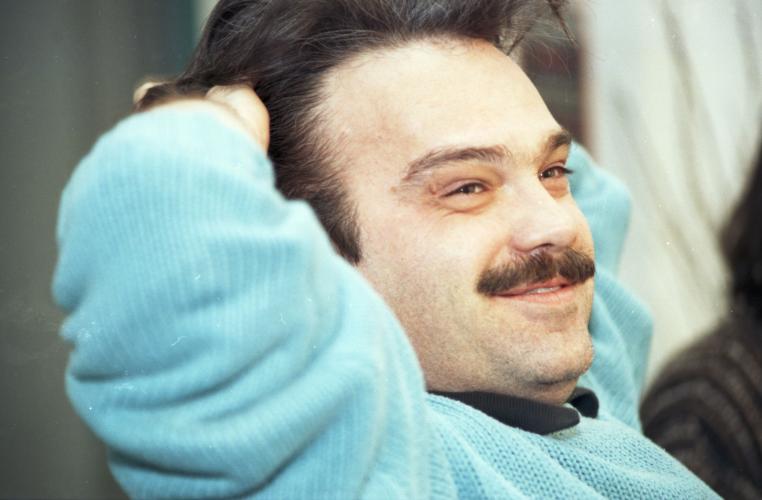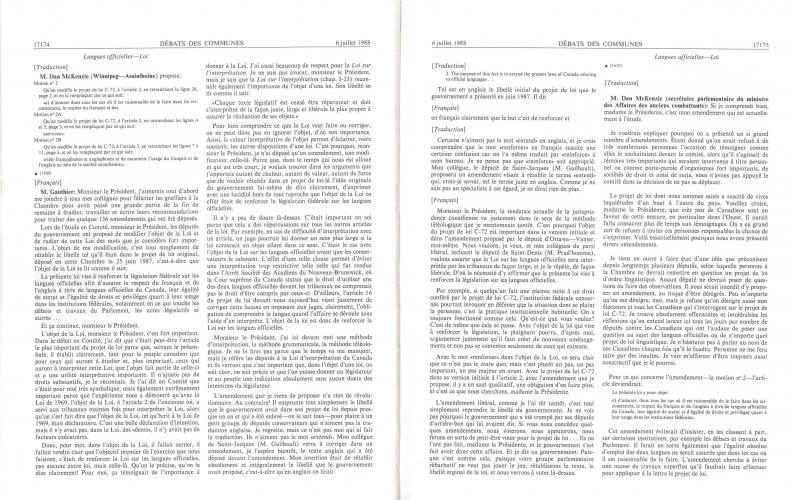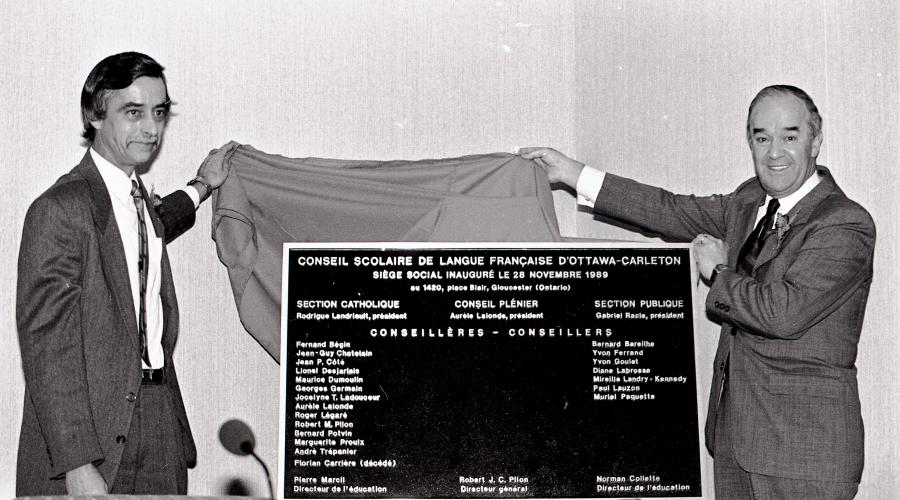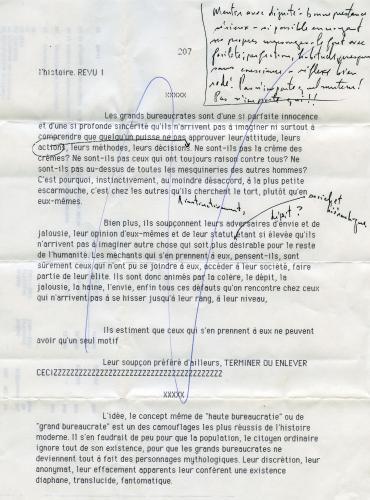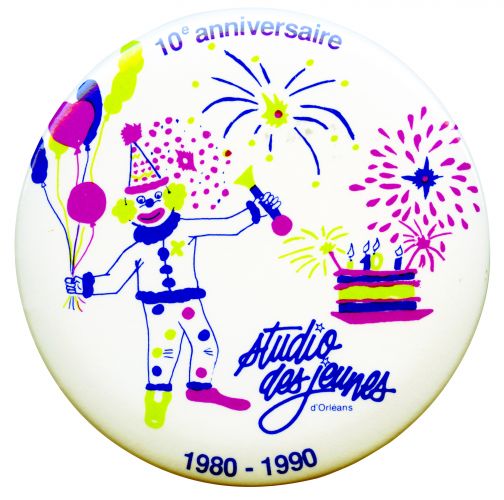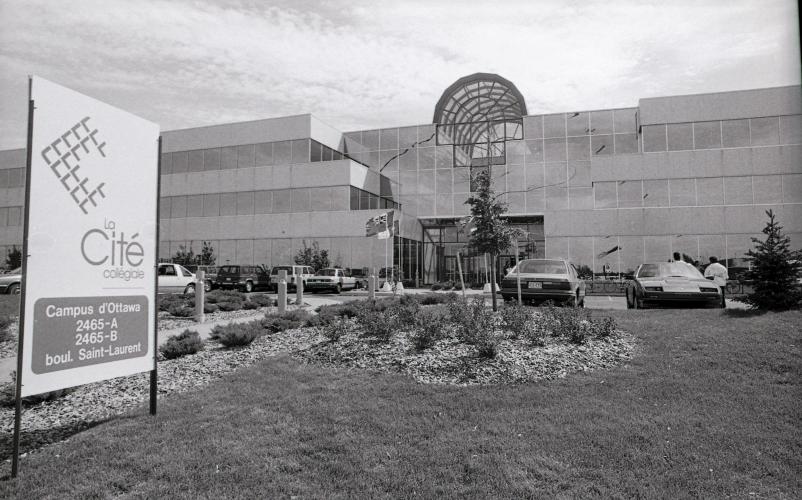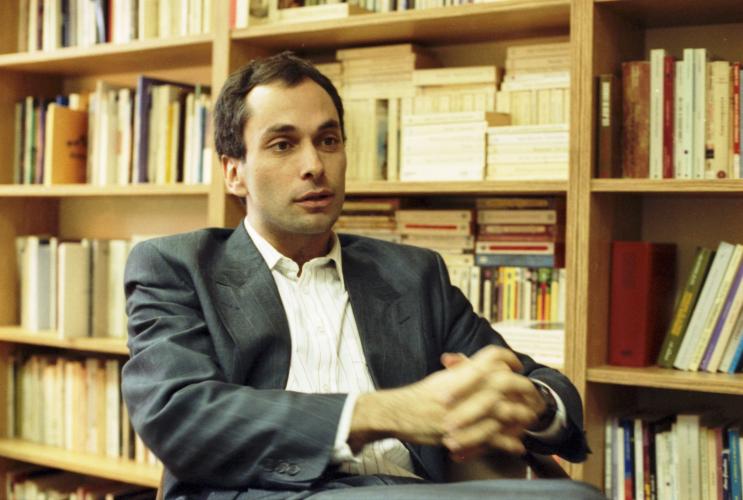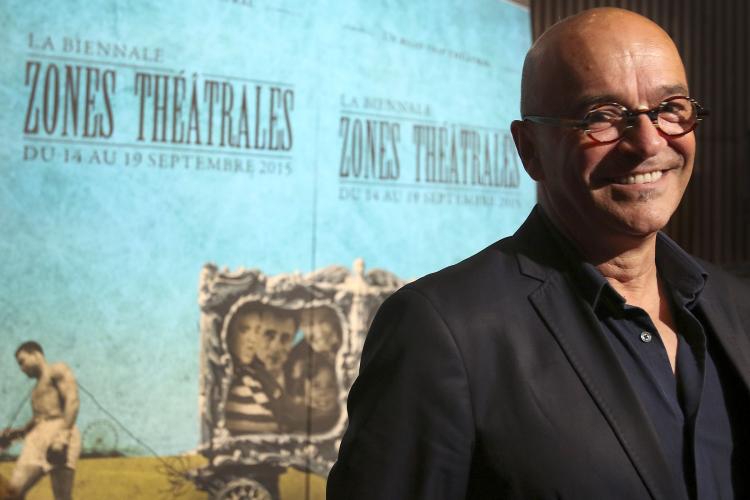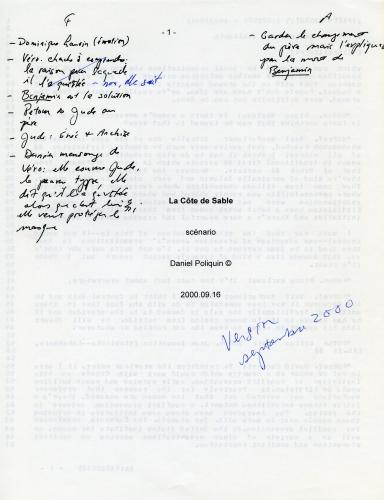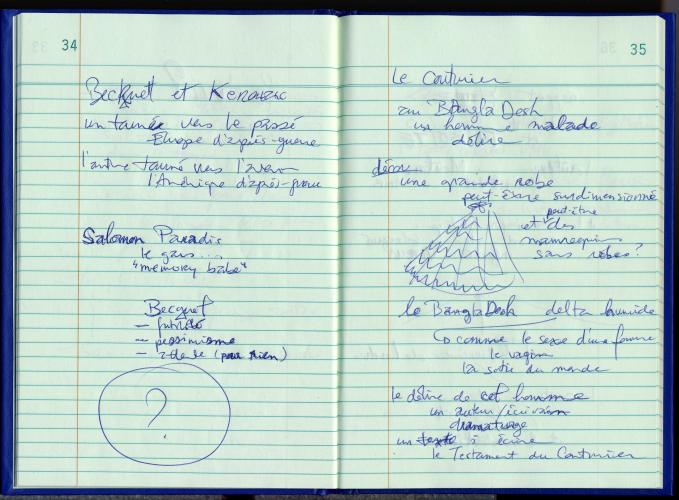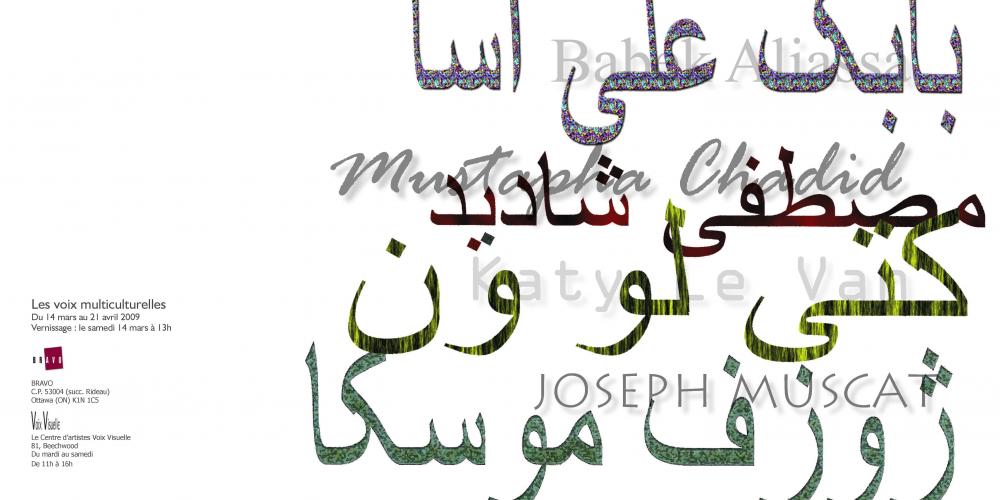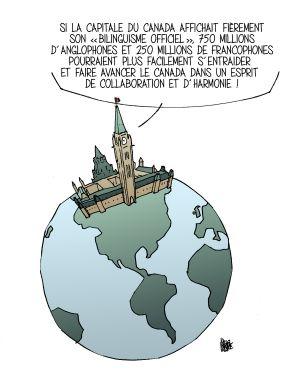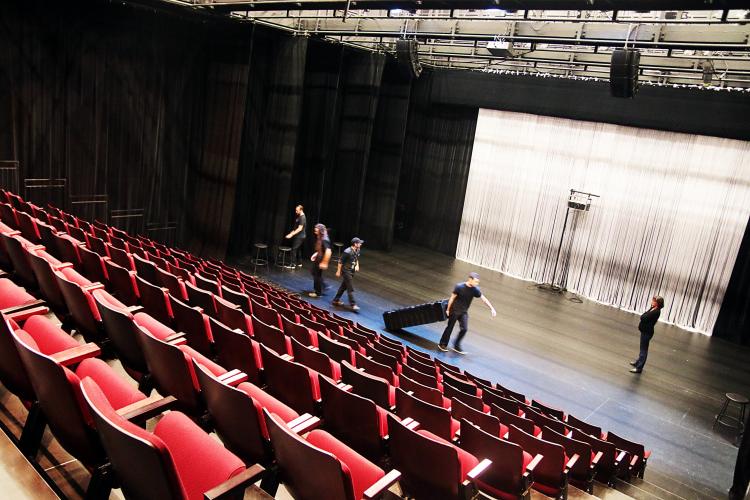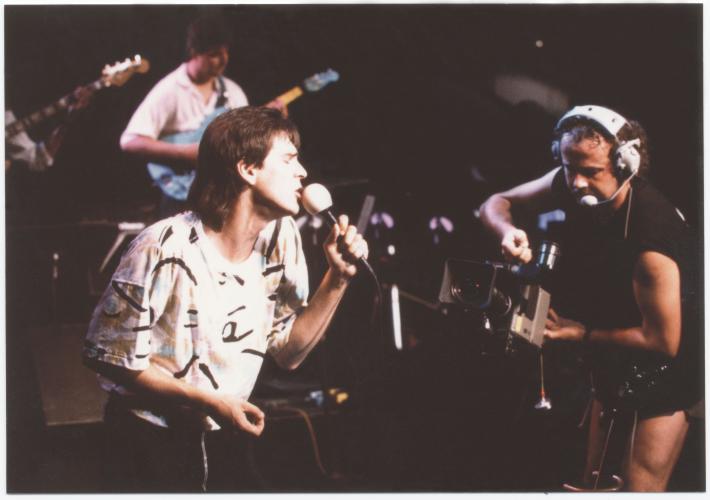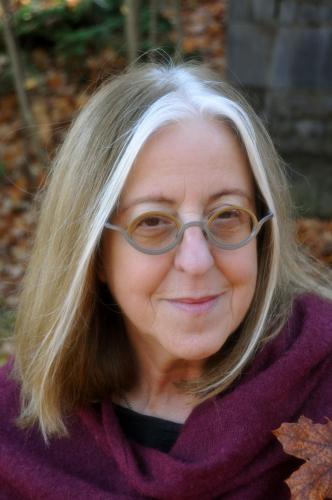Timeline
Explore the events that mark the history of French life in the capital through this timeline.
Lithograph showing a view of Ottawa’s Lowertown, “Ottawa City, Canada West, Lower Town,” [ca. 1855]. Attributed to Edwin Whitefield (1816-1892).
Sawmill erected by Jean-Baptiste Saint-Louis in 1830 on the Rideau River near Bytown. Engraving attributed to E. Benjamin, from a drawing by William Henry Bartlett (1809-1854), in Willis, N.P., Canadian Scenery, London, 1842, Vol. II, facing p. 8.
Bytown General Hospital, [1845-1850]. The complex includes three buildings: the first convent, the first boarding school, and the first Bytown hospital, established by Sister Élisabeth Bruyère.
The cathedral, at the corner of Sussex and St. Patrick Streets, [after 1858]. After two modifications to the original plan, the walls and roof were completed in 1846, five years after the work began. The church was blessed on August 15, 1846, by Bishop Patrick Phelan, of Kingston. Its steeples, added in 1858, dominate the landscape of Lowertown. Photo: William James Topley.
Msgr Joseph-Bruno Guigues, first bishop of the Diocese of Bytown, 1865.
Members of the Institut canadien-français d'Ottawa, card and billiards players, in a room at the institute, Ottawa, [ca. 1890].
Joseph-Balsora Turgeon (1810-1897). In 1853 he becomes the first French-speaking mayor of Bytown, which becomes, under his administration, the City of Ottawa [ca. 1848-1850].
Rideau Street, seen from Parliament Hill, where the construction of East Block (United Province of Canada Parliament) begins, [ca. 1861]. Photo: Samuel McLaughlin.
Union Saint-Joseph d’Ottawa membership certificate, no. 35331, Alfred Rochefort, Ottawa, April 16, 1908. The Society offers its members social security in case of illness or death, which means they can avoid the need for public assistance, a solution very negatively perceived in most circles. To be admitted, members must provide a medical certificate.
Sainte-Anne Church, Ottawa, [ca. 1940]. Photo: Champlain Marcil.
Members of the Saint-Jean-Baptiste Church choir and interior of the church, Ottawa, October 1898.
Program for the inauguration of University of Ottawa and the unveiling of the statue of Father Joseph-Henri Tabaret, October 10, 1889. On the front cover, drawings of the College of Bytown building on Sussex Drive in 1853, and drawings of the four stages of University of Ottawa building construction between 1857 and 1884.
View of Queen Street, westbound, during the Ottawa-Hull fire in 1900 [ca. April 26, 1900]. The great fire of 1900 burns a part of the neighbourhood to the ground and leaves its mark on the urban landscape, six decades before the Gréber plan is implemented.
The Monument national, Ottawa, located at 113 George Street, at the corner of Dalhousie, Ottawa, 1910. ACFO will be created at the Grand Congrès des Canadiens français held from January 18 to 20, 1910, at the Monument national. Copy of a print: Congrès d’éducation des Canadiens-français d’Ontario, ACFÉO, 1910, p. 340.
First location of Ottawa’s Caisse populaire Notre-Dame, 97 Clarence Street, [ca. 1940].
Linotype workshop, Le Droit newspaper, Ottawa [ca. 1923]. Photo: Studio Déry, Hull. Le Droit is published for the first time en March, 1913. Le Droit’s motto: “The future belongs to those who fight”.
Almanda Walker-Marchand, founder and general president of the Fédération des femmes canadiennes-françaises (FFCF) from 1914 to 1946, Ottawa, [ca. 1928].
Speech by Napoleon Champagne, Member of Parliament for Ottawa East, to the Ontario Legislature, March 26, 1914. Voters in the riding of Ottawa East cannot forgive Champagne for the adoption of Regulation 17, which essentially prohibits the teaching of French in schools in the province. This Conservative is defeated in 1914, despite the great patriotic speech he gives against his own party.
Nine founding members of the Ordre de Jacques-Cartier at a plenary meeting of the CX (Chancellery) at the Château Laurier, marking the Order’s twenty-fifth anniversary. Front row: Adélard Chartrand, Émile Lavoie, F.-X. Barrette, Esdras Terrien and Louis-Joseph Châtelain. Back row: Oscar Barrette, Philippe Dubois, Achille Pelletier and Charles Gautier, Ottawa, September 28, 1952. Photo: Champlain Marcil.
Forty thousand men escorting the statue of Our Lady of the Cape on a five- kilometer route from the Ottawa Cathedral to Lansdowne Park, Monday, June 16, 1947. Curiously, only men seem to have participated in the march. Taken from a leaflet: Le Congrès marial d’Ottawa, Ad jesum per mariam, Ottawa, 1948. Photo: Marcel Boulet.
Banquet to celebrate the 100th anniversary of the founding of Ottawa’s Société Saint-Jean-Baptiste, Ottawa, 1953. Louis Charbonneau delivering a speech. To his left, Hector Roy, Msgr Marie-Joseph Lemieux, and Jeanne Renault, wife of Premier Louis Saint-Laurent, who was also present. Photo: Champlain Marcil, Le Droit.
Boarded-up houses in Ottawa’s Lowertown prior to demolition. Several hundred houses in the neighbourhood suffer the same fate during the 1960s and 1970s. Photo: François Roy.
National Arts Centre news conference, launch of the French Theatre Season 1983-84, May 18, 1983. Since its opening in 1969, the NAC offers two theatre seasons, one in French, one in English. Photo: Michel Lafleur.
Pauline Vanier, on the right (and possibly Mayor Bernard Grandmaître from behind), in ceremonies held when the city of Eastview changed its name to Vanier, on January 1st, 1969. Here, the unveiling of a welcome sign with the new name.
Two young people in front of the École secondaire André Laurendeau, the first entirely French-language public school in the province (formerly Eastview High School), Vanier, 1980. Photo: François Roy, Le Droit.
Drawing from “Nature et historique de Direction-Jeunesse,” with the movement’s logo [ca. 1975]. Formed in October 1970, Direction-Jeunesse (DJ) takes shape from the merger of two youth movements engaged in controversial and irreparable conflict: the Association de la jeunesse franco-ontarienne (AJFO) and the Assemblée provinciale des mouvements de jeunes de l’Ontario français (APMJOF). DJ’s history is presented as a succession of cycles, each starting with a crisis, followed by re-organisation and years of rewarding achievement.
Interior of the Rideau Street Convent chapel, Ottawa, [n.d.]. Photo: William James Topley.
Franco-Ontarian music group 33 Barrette, [ca 197-?].
Jacqueline Pelletier with the bouquet of flowers she receives from friends and supporters upon her release from prison, where she was incarcerated for refusing to pay a unilingual traffic ticket, June 16, 1975. Photo: Gilles Benoît, Le Droit.
Inauguration of the Centre franco-ontarien de ressources pédagogiques (CFORP): Gérard Raymond, Gisèle Lalonde, Bernard Grandmaître and Jean-Robert Gauthier, Vanier (Ottawa), February 13, 1976. Photo: Michel Lafleur, Le Droit.
Created in 1976, the Festival franco-ontarien holds its 42nd edition at Major's Hill Park from June 15 to 17, 2017. Photo : Sylvain Marier.
Liaison, Theatre Action’s monthly newsletter, no.16, Ottawa, June 1981, front cover.
Celebration of the 125th anniversary of the Notre-Dame-de-Lourdes Parish, founded in 1854. Notre-Dame de Lourdes Grotto, Vanier, July 19, 1979. Photo: Le Droit.
Poster of the play La parole et la loi, a collective creation presented by the Théâtre d’la Corvée, March 20-31, 1979, Toronto.
As Minister Responsible for Francophone Affairs, MPP Bernard Grandmaître (Ottawa-East) introduces Bill 8 at the Legislative Assembly of Ontario on July 2, 1986. The French Language Services Act is adopted on November 18, 1986. For Premier David Peterson, Bill 8 was the final step toward official bilingualism in Ontario. But this step has not yet been completed in the province.
Jean Marc Dalpé, author and man of the theatre, Ottawa, December 13, 1994. Jean Marc Dalpé has received the Governor General’s Award three times. Photo: Étienne Morin, Le Droit.
Speech by Jean-Robert Gauthier in the House of Commons regarding Bill C-72, in the July 6, 1988 Hansard, p. 17174-17175. Were it not for the repeated intervention of this faithful Liberal, the Official Languages Act may never have been reviewed by the Conservative government in 1988 to include provisions on the express responsibility of federal institutions to take measures to promote minority languages. An English version of the debates can be accessed on the Library of Parliament website.
Inauguration of the Conseil scolaire de langue française [d’]Ott[awa-]Carleton. On the left, president Aurèle Lalonde. Photo: M [ichel] Tessier, Le Droit, November 28, 1989.
Typed and annotated page by Maurice Henrie from the manuscript of his short story collection Le petit monde des grands bureaucrate [1989-1991], published in 1992 by Éditions de Mortagne. Although he is a civil servant like many Franco-Ontarian authors before him, Maurice Henrie distinguishes himself by drawing heavily on his work environment to write his books. It is his two satirical essays on the public service, La vie secrète des grands bureaucrates (1989), translated into English as the Mandarin Syndrome: the Secret Life of Senior Bureaucrats, the following year by the University of Ottawa Press, and Le petit monde des grands bureaucrates (1992) which bring him renown.
Button of the 10th anniversary of Studio des jeunes d'Orléans, 1990. Created in 1980, this committee of MIFO offers a couple dozen courses to more than 500 children and adults after two years and holds other activities as well. Le Studio des jeunes was integrated into the new Centre culturel d'Orléans in 1985.
The main entrance to the Cité collégiale, Ottawa Campus, September 4, 1990. Photo: [Michel] Lafleur, Le Droit.
Robert Yergeau, founder of Éditions du Nordir, January 7, 1992. Photo: René Binet, Le Droit.
The Jeux franco-ontariens, Collège catholique Samuel-Genest, May 24, 2011. The “Les Personnages” team wins the final match of the improvisation competion at the 18th annual Jeux franco-ontariens. Photo: Martin Roy, Le Droit.
René Cormier, artistic director of Zones théâtrales, 6th edition, September 14-19, 2015. Photo: Patrick Woodbury, Le Droit, June 10, 2015.
Gisèle Lalonde, president of the S.O.S. Montfort movement, addresses the crowd at the great S.O.S. Montfort rally, Ottawa Civic Centre, March 22, 1997.
First annotated page of the the manuscript (script) of La Côte de Sable, September 16, 2000 version. Originally published under the title Visions de Jude (Quebec/America, 1990), this novel wins several literary prizes, and draws public and critical attention to Poliquin’s work. It has been translated in English as Visions of Jude.
Pages of handwritten notes by Michel Ouellette on Le testament du couturier, p. 34-35 [ca. 1989]. The play plunges us into the astonishing theatrical space of the suburbs. Directed by Joël Beddows, Théâtre la Catapulte, in 2003, Le testament du couturier (translated in English as The Tailors' Will in 2005) receives the Trillium award in 2002.
Cover of Les voix multiculturelles exposition catalogue, presented in 2009 by Voix Visuelle. Founded in 2007 with the support of BRAVO, the Voix Visuelle arts centre is designed as a self-directed Francophone centre with an artistic and educational vocation.
Véronique Soucy at the helm of Unique FM’s morning show, December 14, 2013. Photo: Patrick Woodbury, Le Droit.
The logo and new corporate name of ACFO Ottawa, Association des communautés francophones d’Ottawa, inscribed in its new letters patent in 2012. Created in 1969 as the Ottawa-Vanier Regional Council of the provincial ACFO, the Ottawa branch has, over the years, embraced the political and territorial transformations of Ottawa Francophones. Incorporated in 1994, it was renamed the Association canadienne-française de l'Ontario, Ottawa Regional Council in 1997 (ACFO Ottawa). The new name reflects the diverse origins of Francophones in Ottawa, while retaining the historical acronym. It is also consistent with the “Inclusive Definition of Francophone (IDF)” adopted by the Government of Ontario in 2009.
A bilingual Capital for Canada. Drawing by Michel Lavigne, text by Jacques de Courville Nicol, used to illustrate L’Aurore boréale newspaper column, September 24, 2014.
The new theatre of the Nouvelle Scène opens its doors in January 2016. Photo: Étienne Ranger, Le Droit, September 15, 2016.
Paul Demers at the Franco-Ontarian Festival, Ottawa, 1987. Singer-songwriter Paul Demers has been performing on all stages since the late 1970s. In March 2017, Queen’s Park designates “Notre Place” by Paul Demers as the official Franco-Ontarian anthem. Specially written to mark the coming into force of the French Language Services Act grand gala held in Toronto in November 1989, it created quite a buzz.
Mehdi Cayenne, May 7, 2017. A freelance performer on the Ottawa music scene, singer-composer-songwriter Mehdi Cayenne wins top honors at the 9th Trille Or awards gala in 2017. The proud representative of a new generation of singers who come from elsewhere, Mehdi Hamdad says that his work is poetically influenced by exile and diaspora. These are stigma that Mehdi “Cayenne” Hamdad, of Algerian origin, perceives as the founding myth of his identity, both personal and artistic. Photo: Martin Roy, Le Droit.
Andrée Lacelle, first Franco-Ontarian writer to receive the Prix Trillium in 1995 for her collection of poems Tant de vie s’égare. Photo: Nancy Vickers, 2010.
